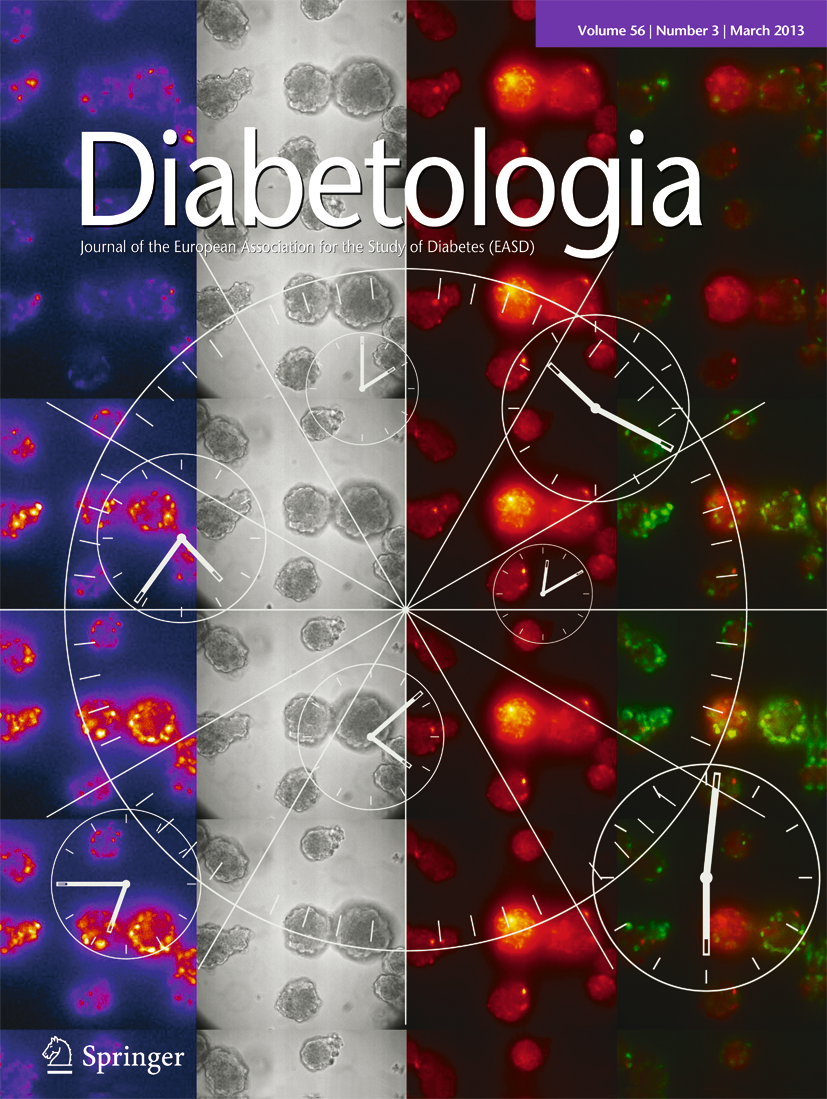Autonomous and Self-Sustained Circadian Oscillators Displayed in Human Islet Cells
P. Pulimeno, T. Mannic, D. Sage, L. Giovannoni, P. Salmon, S. Lemeille, M. Giry-Laterrière, M. Unser, D. Bosco, C. Bauer, J. Morf, P. Halban, J. Philippe, C. Dibner
Diabetologia, vol. 56, no. 3, pp. 497–507, March 2013.
Aim/hypothesis: Following on from the emerging importance of the pancreas circadian clock on islet function and the development of type 2 diabetes in rodent models, we aimed to examine circadian gene expression in human islets. The oscillator properties were assessed in intact islets as well as in beta cells.
Methods: We established a system for long-term bioluminescence recording in cultured human islets, employing lentivector gene delivery of the core clock gene Bmal1 (also known as Arntl)-luciferase reporter. Beta cells were stably labelled using a rat insulin2 promoter fluorescent construct. Single-islet/cell oscillation profiles were measured by combined bioluminescence-fluorescence time-lapse microscopy.
Results: Human islets synchronised in vitro exhibited self-sustained circadian oscillations of Bmal1-luciferase expression at both the population and single-islet levels, with period lengths of 23.6 and 23.9 h, respectively. Endogenous BMAL1 and CRY1 transcript expression was circadian in synchronised islets over 48 h, and antiphasic to REV-ERBα (also known as NR1D1), PER1, PER2, PER3 and DBP transcript circadian profiles. HNF1A and PDX1 exhibited weak circadian oscillations, in phase with the REV-ERBα transcript. Dispersed islet cells were strongly oscillating as well, at population and single-cell levels. Importantly, beta and non-beta cells revealed oscillatory profiles that were well synchronised with each other.
Conclusions/interpretation: We provide for the first time compelling evidence for high-amplitude cell-autonomous circadian oscillators displayed in human pancreatic islets and in dispersed human islet cells. Moreover, these clocks are synchronised between beta and non-beta cells in primary human islet cell cultures.

@ARTICLE(http://bigwww.epfl.ch/publications/pulimeno1301.html,
AUTHOR="Pulimeno, P. and Mannic, T. and Sage, D. and Giovannoni, L. and
Salmon, P. and Lemeille, S. and Giry-Laterri{\`{e}}re, M. and Unser,
M. and Bosco, D. and Bauer, C. and Morf, J. and Halban, P. and
Philippe, J. and Dibner, C.",
TITLE="Autonomous and Self-Sustained Circadian Oscillators Displayed in
Human Islet Cells",
JOURNAL="Diabetologia",
YEAR="2013",
volume="56",
number="3",
pages="497--507",
month="March",
note="")